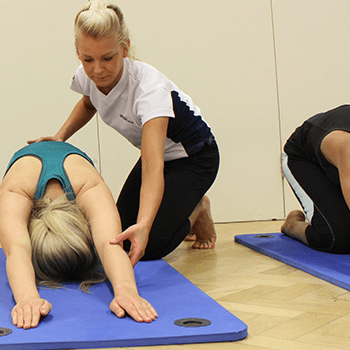Pilates for Hypermobility
Pilates is a highly effective treatment for people with hypermobile joints. Hypermobility it the term used to describe increased joint movement due to ligament laxity. People with hypermobility have too much flexibility in their joints which can often lead to pain, soft tissue injury and sometimes joint dislocation. Pilates can help to stabilise joints by retraining and strengthening specific muscles.
How it works
Pilates for people with hypermobile joints involves various different exercises to increase the strength of the body’s stabilising muscles. The primary stability muscles lie deep in the body as well as surrounding important joints such as the shoulders, the spine and the pelvis. As the stabilising muscles get stronger, they are able to offload the major joints, as well as providing them with more stability. Greater control of movement and increased joint support lead to the re-education of normal movement patterns and a reduction of pain.
Exercises are progressed to challenge the stability muscles with use of body weight, upper and lower limb movement and use of small equipment.
Benefits of Pilates for Hypermobility
Benefits of Pilates for Hypermobility include:
- Reduced joint pain
- Increased joint stability
- Improved postural position
- Increased functional ability
- Normalised movement patterns
- Reduced risk of injury
- Quicker recovery post-injury
- Enhanced sporting performance
See what Helen had to say about how Pilates helped with her knee pain.
See what others had to say about their experience at Physiolates on our testimonials page.
If you have hypermobility but are unsure whether Pilates would benefit you, you can e-mail us at office@physiolates.org.uk or call 0330 088 5778 to speak to one of our physiotherapists.
To book your free taster class click the Book Now tab or call today on 0330 088 5778 or email office@physiolates.org.uk
Back To Top




